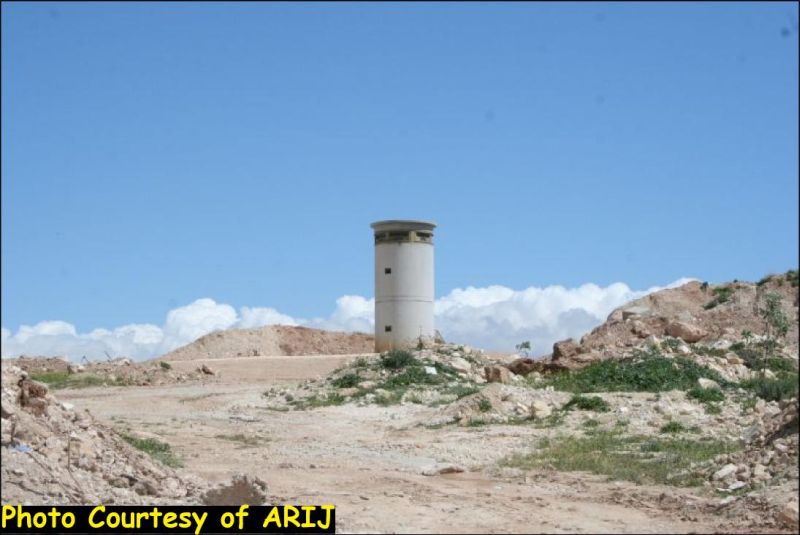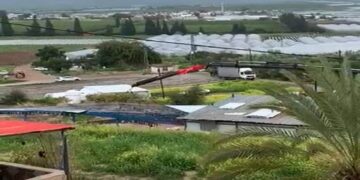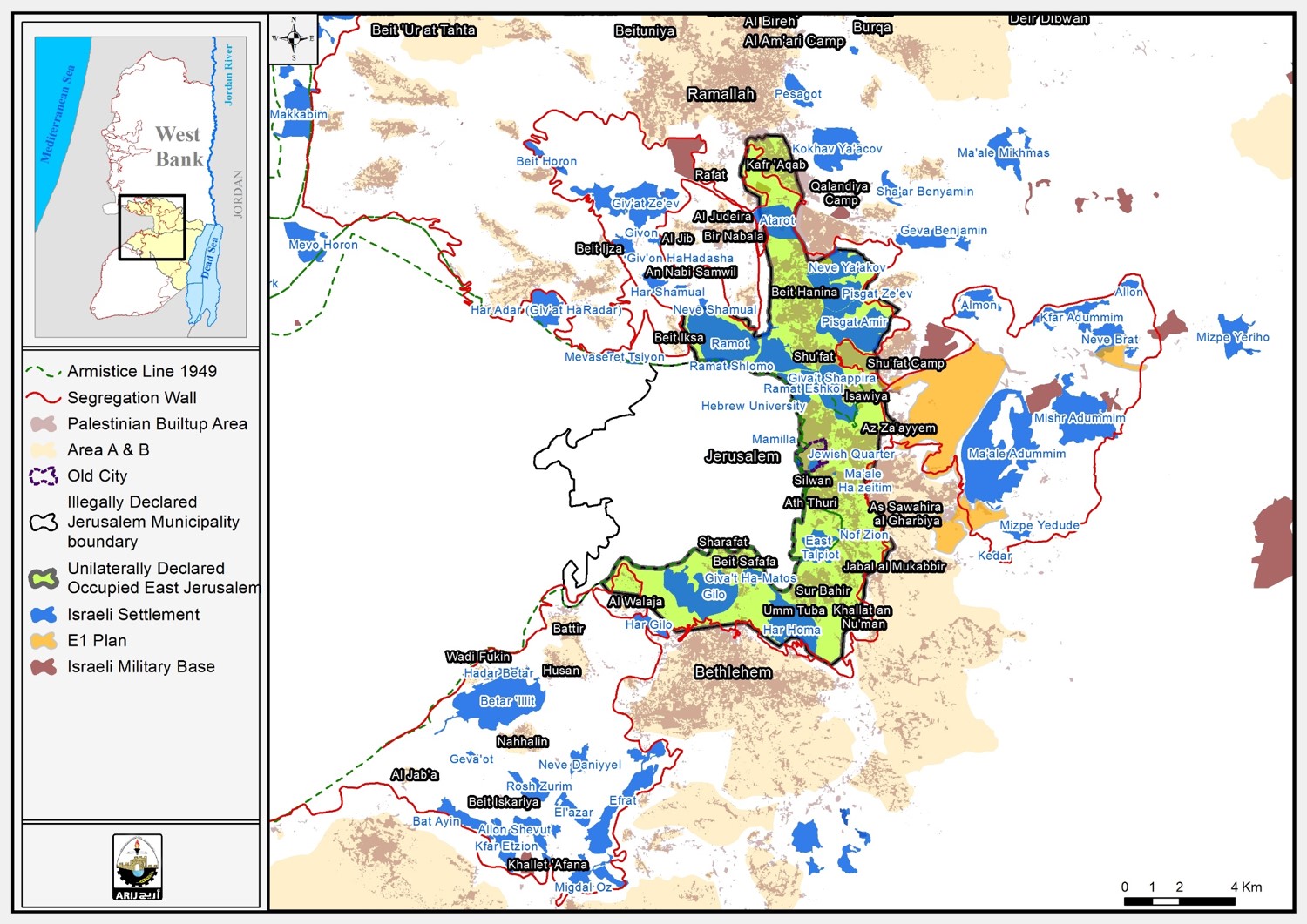Growing concerns rising over the hidden agenda looping the settlement freeze arrangement in the occupied Palestinian territories have been rising. Recent ambiguous statements and actions by the occupying state, its governmental and army bodies indicate serious breach of the memorandum, demonstrating and affirming the ‘De-Facto’ policy that Israeli decision makers have pull off throughout the occupation.
The ‘Women in Green’ have recently set out calls for extreme settlers around the occupied West Bank illegal settlements pledging support in there move toward imposing facts on the ground and settling on more occupied Palestinian lands beyond the
Green Line in the occupied West bank territory.
In its recent circulated e-mail, on the 9 May 2010, it called upon it’s supporters for there backing and presence on Palestinian lands, located within Al Khader Village of the West Bank governorate of Bethlehem.
Al Khader village have witnessed long illegal occupation practices of colonization, land grab and illegal exploitation of the occupied Palestinian territories. 2,916 Dunums of Al Khader village lands have been confiscated and were relocated for settlement colonizing projects by the occupying state of Israel (Look table 1), Al Khader Village also lost a total of ’12’ Km length that were allocated for constructing settlers only roads, that connect the colonial settlement project to main Israeli urban areas.
Violations escalated against Al Khader village with the construction of the illegal segregation wall like in other Palestinian areas, which lost Al Kahder village tremendous areas of lands; a total sum of 15,189 Dunums that were segregated behind the Israeli segregation wall, 6.6Km in length of wall that segregated the village from it’s lands.
|
Table 1: Israeli settlements built on lands of Al Khader Village
|
|
No.
|
Settlement Name
|
Date of establishment
|
Area
In Dunums*
|
|
1
|
Allon Shevut
|
1971
|
38
|
|
2
|
Efrat
|
1979
|
1,709
|
|
3
|
El’azar
|
1975
|
536
|
|
4
|
Migdal Oz
|
1977
|
46
|
|
5
|
Neve Daniyyel
|
1982
|
584
|
|
6
|
Rosh Zurim
|
1969
|
4
|
|
*[1 Km² = 1000 Dunum] Total
|
2,916
|
Source: ARIJ GIS Unit 2010
‘Netzer’ is the given name for the future planed location for an
outpost located between the
settlements of Alon Shuvut and Elazar within the ‘Gush Etzion’ settlements block; located to the West of Bethlehem governorate and houses more than 53,868 illegal settlers.
Gush Etzion settlements cluster is one of the main 6 settlements blocks that Israel mentioned that it will continue to hold on to under any negotiuation status with the Palestinians. This settlements bloc has 11 settlements and 12 outposts, all of wich has plans for expansion within the next decade.
The outposts on the other hand is a tool used by the settlers to indirectly provide areas for settlements’ expansion; so effective that the 232 outposts that exist today throughout the occupied West Bank territory allowed for 173% expansion to the settlements areas since the beginning of the peace talks. See Map 1
 Map 1: distribution of Israeli outposts in the occupied Palestinian territory
Map 1: distribution of Israeli outposts in the occupied Palestinian territory
Furthermore, the right wing movement stated clearly that the Israeli occupying force will help and facilitate their project scheme. Apparently, the right wing government of Benjamin Netanyahu is looking the other way; or so it seems when it comes to the settlers’ actions; indirectly providing what ever logistic help to the settlers without ‘according to their conviction’ do not breach the so-called 10 months settlements freeze that started on November 26 2009.
Earlier in this year, this same Israeli movement ‘Woman in Green’ started a protest and measures on 11 Feb 2010 to recapture the Israeli military site of ‘Ush Ghurab’ that the Israeli Army evacuated few years back, in order to establish an outpost there. The Israeli Army did not directly interfere with what the settlers action but continued to provide protection and logistic to them facilitating their protest on site and eventually putting up a military observation tower (look Picture Num 1 & 2), declaring the area as closed military area.
 February 2010
February 2010

March 2010
Photo 1 & Photo 2: Israeli redeployment in Ush Ghurab
On the same notion, the new position adopted by the Israel state prosecutor on investigating in the possibility of legalizing illegal outpost of ‘Derech haavot’ established by settlers on private Palestinian lands, reflects what Israel has been saying for some time that only some of these illegal outposts are actually illegal and the rest falls within the legal terms of the Israeli state policy in the occupied Palestinian territory.
To conclude:
Israel’s policies regarding the settlements and the outposts may have shifted over the last decade in conform with the Israeli segregation wall construction as certain settlements and outposts now gaining a favorable status to others; those captured on the Israeli side of the wall, which Israel seeks to annex within the western segregation zone.
By all international laws the occupying power
[Israel] should not work to move it’s population to the occupied territories, neither should it deprive the native Palestinian population of their basic right of property ownership, on the 25 of January 2010 the United Nations General Assembly adopted resolution A/RES/64/19; clearly noting and reaffirming the illegality of all Israeli occupation practices of exploitation and control over the occupied Palestinian territories, the illegality of Israeli settlements build within the 1967 occupied Palestinian territories including East Jerusalem
‘Reaffirming the illegality of the Israeli settlements in the Palestinian territory occupied since 1967, including East Jerusalem’ and the Israeli building of the de-facto illegal Israeli segregation wall. The General Assembly resolution also reaffirmed relevant resolutions previously set by the UN General Assembly, and UN Security council ‘
Recalling further relevant Security Council resolutions, including resolutions 242 (1967) of 22 November 1967, 338 (1973) of 22 October 1973, 1397 (2002) of 12 March 2002, 1515 (2003) of 19 November 2003, 1544 (2004) of 19 May 2004 and 1850 (2008) of 16 December 2008′.
The Forth Geneva Convention is applicable and obliges the occupying power under it’s articles to avoid such appropriation of property; Article 49 “The occupying power shall not deport or transfer parts of its own population into the territories it occupies’, furthermore and under Article 147 of the same convention; ‘extensive destruction and appropriate of property, not justified by military necessity and carried out unlawfully and wantonly’ as a grave breach of the Convention and thus constitute a war crime’. Subsequently the status of the illegal Israeli settlements as an illegal practice of an occupying power; such act is categorized as a ‘Grave Breach’ of the international laws constituting war crime.
By so the legal status internationally declared, recognizes the Palestinian territories as occupied territories, thereby such unlawful act represents a grave breach or war crime under international laws, holds Israel responsible and accountable by the world nations
‘Without prejudice to the provisions of the foregoing Article, grave breaches of the Convention shall be punished as crimes against the law of nations by the tribunals of any of the High Contracting Parties or by any international jurisdiction the competence of which has been recognized by them. Grave breaches shall include in particular those which cause death, great human suffering or serious injury to body or health, those which constitute a grave denial of personal liberty or a derogation from the dignity due to the person or involve extensive destruction of property, also breaches which by reason of their nature or persistence show a deliberate disregard of this Convention.’
:::::::::::::::
[3] Resolution adopted by the General Assembly [without reference to a Main Committee (A/64/L.23 and Add.1)] 64/19. Peaceful settlement of the question of Palestine
[4] II. ‘ Grave violations. ‘ Convention (IV) relative to the Protection of Civilian Persons in Time of War. Geneva, 12 August 1949. Part IV : Execution of the convention #Section I : General provisions
Prepared by













